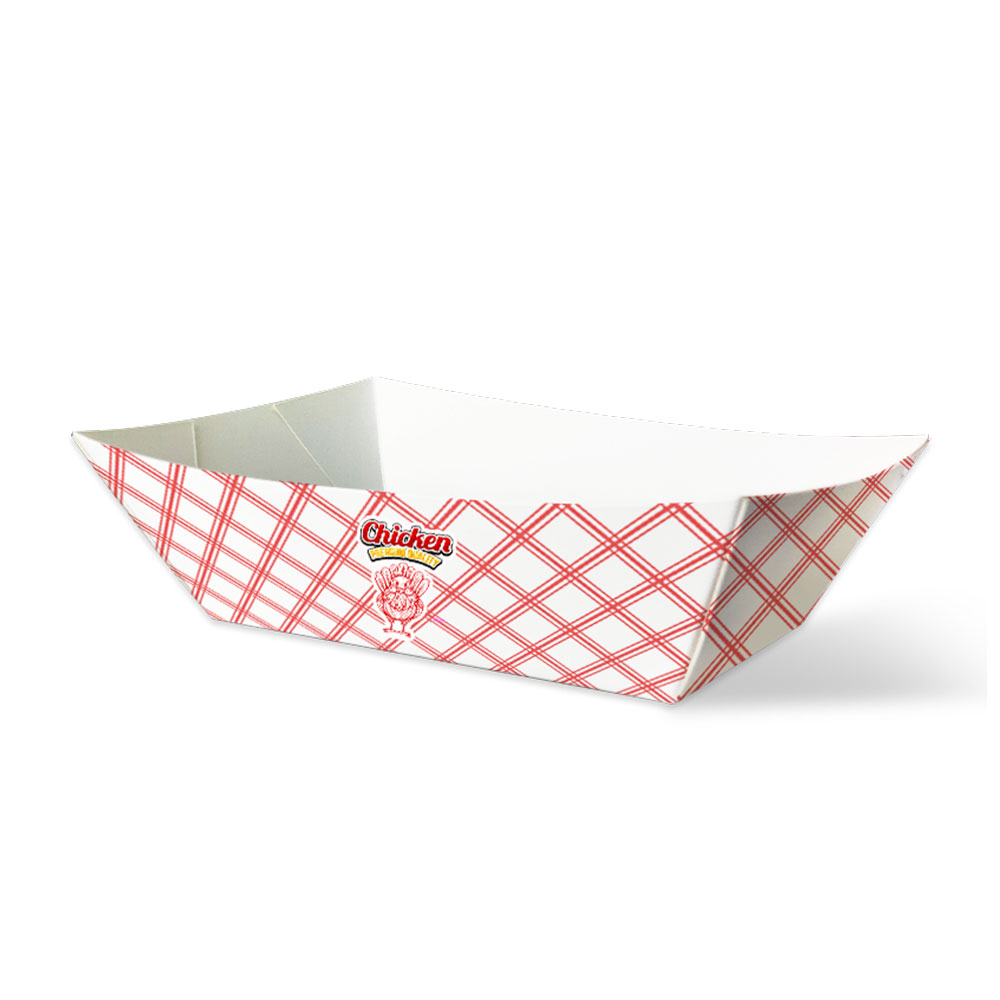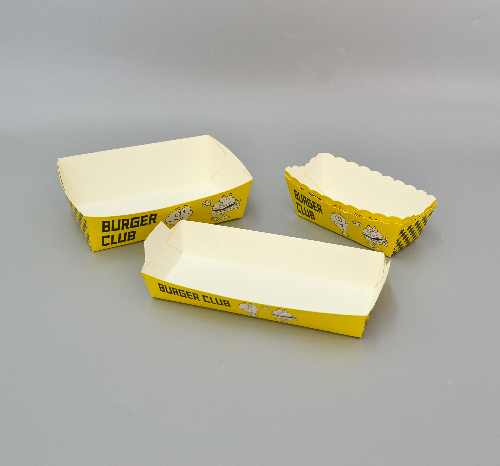Introduction

Paper food trays are versatile solutions for serving, transporting, and displaying a wide variety of foods. From large events to everyday takeout, paper trays get the job done with practicality and pennies on the dollar compared to permanentware. This article explores common paper food tray types, key factors in selection, customization opportunities, and recommendations for choosing the right paper trays for your needs.
Popular Types of Paper Food Trays
Paper food trays come in many styles, sizes, and shapes. Here are some top varieties:
- Compartment trays – Multiple sections keep different foods separate. Popular for school cafeterias, catering, and airplane meals.
- Boat trays – Contain a single open compartment. Often used for fast food meals, deli sandwiches, and food courts.
- Basket trays – Feature higher side walls and raised bottom perforations for ventilation. Great for fried foods like fries or wings.
- Plate trays – Shaped like a flat plate with shallow side edges. Ideal for burgers, tacos, pizza, and plated meals.
- Deli trays – These have a lip or edge around the rim to contain sauces. Perfect for sliced meats, cheese, salad bars, and appetizer platters.
- Soufflé trays – Deep paper cups with pleated sides allow expansion when baking. Used for ramekins and individual desserts.
Key Selection Factors
Consider these elements when choosing paper food trays:
- Type of food – Hot, cold, dry, greasy, saucy, etc.
- Microwave and oven safe?
- Portion size and shape
- Single-serve or family-style
- Disposable or reusable
- Display needs – lid window, clear sides, etc.
- Food safety
- Structural integrity and leak resistance
- Moisture resistance if condensation is likely
- Ability to be recycled, composted or repurposed
- Branding opportunities – printability, label adhesion
- Cost per tray
Customization Options
Standard paper food trays can be enhanced with:
- Custom sizing and die cuts matched to your menu
- Themed graphics, logos, photos printed directly on trays
- Clear lids or domes for visibility
- Compartments, dividers, and inserts to separate ingredients or provide support
- Insulated liners to retain heat or cold
- Perforations for ventilation and moisture reduction
- Anti-slip coatings on bottom to prevent sliding
- Tear-away strips to divide large trays into smaller portions
Choosing the Right Paper Food Tray Supplier

Key tips for selecting suppliers:
- Review their experience with foodservice paper products
- Inspect sample trays firsthand to evaluate quality
- Ask about custom printing capabilities and minimums
- Discuss options for branded disposables like custom napkins and utensils
- Compare pricing and lead times for your order quantities
- Evaluate their sustainability practices and offerings
- Ensure they comply with food contact regulations
- Check responsive customer service and satisfaction guarantees
Conclusion
Choosing the ideal paper food tray involves a thorough assessment of your requirements and ensuring that the tray features match your specific needs. By selecting appropriate tray characteristics, you can simplify the process of transporting, presenting, and disposing of food items. Moreover, the right paper food trays can effectively prevent leaks, retain optimal temperatures for your dishes, and serve as a canvas for showcasing your brand identity.
With a diverse range of standard and customizable options available, restaurants, caterers, food trucks, and event organizers can discover cost-effective disposable solutions that are perfectly tailored to their menu offerings. Whether you’re serving up savory snacks at a food festival or offering gourmet meals at a formal event, there’s a paper food tray to suit every occasion and culinary creation.
FAQ
What are the most eco-friendly paper food tray options?
Look for trays made from recycled paperboard, renewable plant fibers like bagasse, or compostable materials. Bleached paper treated with harmful chemicals is less green.
How do you determine the right paper tray size?
Measure your actual food portions and allow a bit extra room for sauces and movement. Overly large trays waste money and materials. Too small risks spills and limited capacity.
Can paper trays go in the microwave or oven?
Some paper trays have heat-resistant coatings or structures that allow microwave or low oven usage. Verify the temperature rating before heating paper trays.
How long can food stay in paper trays?
Follow all food safety guidelines for time and temperature control. Properly sealed trays keep food fresh for hours. Soiling, grease saturation, and moisture can shorten usable life.
What printing methods can be used to customize paper food trays?
Options include flexographic printing for high speed production, digital printing for smaller batches or detailed graphics, and lithographic printing for sharp quality with special coatings.
